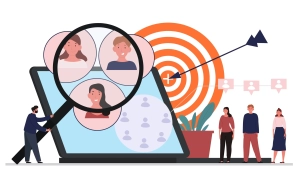
Fostering a Better Client-Agency Relationship to Grow Your Business
There are many benefits to working with a professional marketing agency, no matter how big your business is. A marketing agency can help develop, execute, monitor, and analyze your marketing strategy, thereby assisting in the growth of your company. As a direct result, you’ll also reduce the amount of time, money, and resources you need to throw at your marketing efforts, allowing you to focus on other business-related tasks instead.
However, it’s critical that you build a close working relationship with your agency. You’re entrusting them with your company’s future success, after all. You’ll want to make sure that they’re tailoring your strategy to meet your company’s needs. Keep in mind that a strong relationship is one that both sides work to develop. As such, the following are a few important elements of a successful client-agency relationship that you should be aware of:
1. Clear Expectations for the Client-Agency Relationship
An agency needs to know exactly what you’re expecting from them, both in terms of what services they are providing and what metrics you’re expecting them to achieve. If you don’t lay out your expectations from the get-go, then they won’t know whether they’re on the right track. You should establish milestones and standards. On top of that, make it clear that you expect clear communication and transparency so that if there are any issues, the agency will share them with you and explain their course of action. Otherwise, they may just go at it alone without your input.
Five Reasons To Hire An Advertising Agency Versus Staffing In-House
2. Open Communication
Any relationship, whether in the business world or not, relies on open communication to work. Make yourself available to the agency if they ever have questions or if there are ever any issues. Request the same of them. You’ll want to be able to reach your team leader with ease if there is anything you want to discuss or if you have any questions that need answering. It’s a good idea to have points of contact in place so that both sides know who to reach.
By demonstrating that you expect clear communication, you’ll also make the agency more comfortable in knowing that they can reach out when needed. There are many businesses that will just leave the agency to their own devices and who won’t want to be bothered. Additionally, some agencies may operate in the same way. However, this is a poor way to manage what should be a long-term relationship.
3. Transparency
An agency needs to understand what you’re looking to achieve with your marketing, both in terms of short-term and long-term goals. It also helps to understand what your business goals are so that your marketing strategy can reflect that. If you withhold information such as this, it will be more difficult for the agency to tailor your strategy to your specific needs. In fact, monitoring and evaluating marketing performance will become much more difficult as a result.
will be more difficult for the agency to tailor your strategy to your specific needs. In fact, monitoring and evaluating marketing performance will become much more difficult as a result.
4. Honest Feedback in the Client-Agency Relationship
Establish from the outset that you expect the agency to provide feedback when needed. This way, if you’re not providing the information that your marketing team needs or you’re not getting back to them quickly enough, they will actually let you know. As a result of straightforward feedback, you can not only strengthen your relationship over time, you can keep it from deteriorating (which will only hurt your marketing efforts). The same goes for your side: if the agency’s marketing efforts are not meeting expectations, you need to let them know. You may even want to consider implementing a mutual evaluation at specific dates.
5. True Partnership
Don’t think of an agency as a service provider. Instead, think of them as a partner. After all, their success relies on your success. If you go into the relationship with the idea that you’re partners, you’ll be much more likely to find yourself on the same page as the agency you’re working with. By treating the relationship as a partnership, the agency will have greater success meeting your company’s specific needs.
These are the factors that contribute to a strong relationship between a business and a marketing agency. It’s important that if you outsource your marketing to an agency that they make an effort to develop a trusting relationship with you; however, remember that a good relationship depends on both sides. As such, you need to meet them halfway for the partnership to be a fruitful one. Here at Stevens & Tate, we pride ourselves in not just the work we do, but the relationships that we build with all of our clients.
























